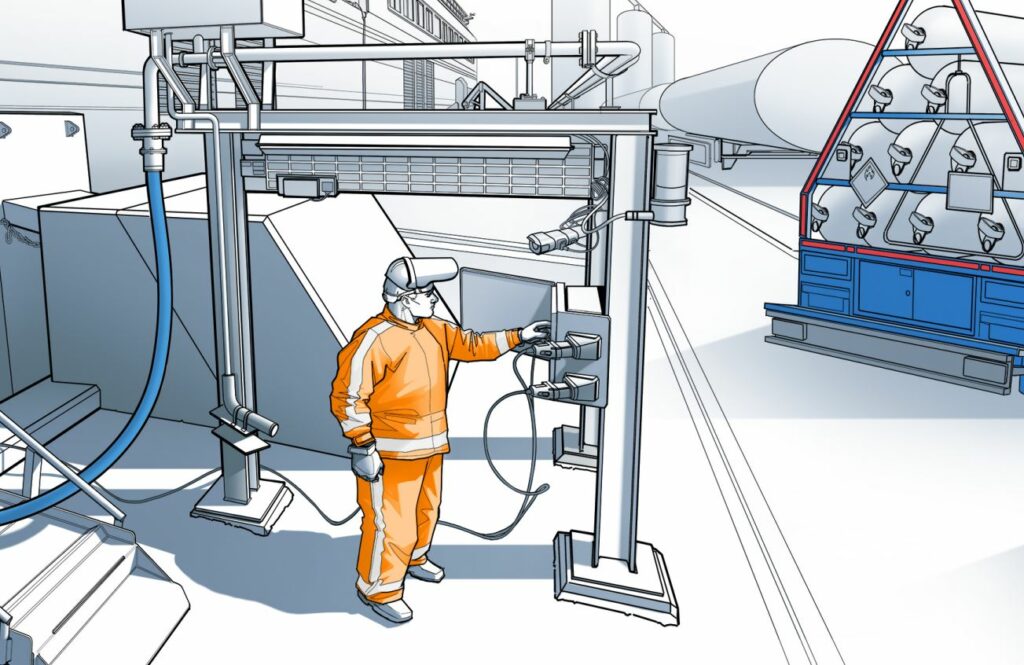The emerging hydrogen economy is poised to revolutionize sectors from transportation to industry, offering a cleaner alternative in the global pursuit of decarbonization.
As nations intensify efforts to meet climate pledges, the potential of hydrogen as a key player in the clean energy mix has come into sharp focus. However, the safe handling, storage, and transport of this versatile gas introduce a unique set of safety challenges that must be addressed as hydrogen becomes more mainstream.
Hydrogen’s Role in Global Energy Transition
Hydrogen’s prominence in global clean energy initiatives stems from its ability to reduce emissions across various sectors. By 2050, Europe aims to meet 25% of its energy demand with hydrogen, while Japan and the USA are planning significant expansions of hydrogen production. Hydrogen’s versatility makes it crucial to sectors such as transport, heating, and heavy industries that are traditionally hard to decarbonize.
Key forecasts predict hydrogen will play a transformative role in reducing carbon emissions. In Europe alone, it is expected to replace fossil fuels across major industries, contributing to a significant cut in CO2 emissions. Similarly, Japan’s push for hydrogen will rival the output of over 30 nuclear reactors by 2050. This widespread adoption, while essential for reducing greenhouse gases, requires robust safety protocols to mitigate risks.
Safety Challenges: From Production to Consumption
Hydrogen’s promise comes with notable risks. The process of production, particularly of green hydrogen via electrolysis, involves handling hydrogen under high pressure. This flammable gas, often invisible when burning, requires advanced detection systems to prevent potential explosions. As hydrogen is odorless and colorless, standard safety measures for other gases, like methane, are less effective.
Storage and distribution present additional concerns. Hydrogen’s small molecular size allows it to leak more easily than other gases, necessitating rigorous inspection and advanced leak detection technologies. In transportation and consumption, such as fueling stations for hydrogen-powered vehicles, specialized safety measures are required to manage the gas’s explosive potential, especially in public spaces.
Hydrogen’s lightweight nature makes it prone to forming gas pockets, which can accumulate undetected in industrial facilities, posing a risk of fire or explosion. It also has the potential to permeate certain materials, leading to embrittlement, which could compromise storage and distribution systems.
Technological Solutions for Hydrogen Safety
Ensuring the safe adoption of hydrogen across industries requires advanced technology. Gas detectors and leak sensors are critical components of hydrogen infrastructure. For example, ultrasonic detectors can sense high-pressure leaks before gas clouds accumulate, and flame detectors are specifically designed to identify hydrogen fires that are otherwise invisible to the human eye.
Innovations in gas detection technology, such as catalytic bead sensors and electrochemical sensors, offer organizations the precision needed to monitor hydrogen levels safely. Companies such as Dräger, a leader in safety technology, have developed comprehensive systems that integrate flame detectors, gas sensors, and ultrasonic leak detection to provide a robust safety net for hydrogen users.
Smart Data Analytics for Safety Management
As regulatory frameworks around hydrogen use become more stringent, organizations are leveraging data analytics to streamline safety compliance. The vast amounts of data generated by gas detection systems can be harnessed to enhance safety protocols, predict failures, and prevent accidents. Automated workflows for data capture and analysis ensure accuracy and provide valuable insights for operational safety.
Building Confidence in Hydrogen Safety
As hydrogen plays a larger role in the global energy transition, safety considerations must remain at the forefront of industry efforts. With proper planning, risk assessments, and the deployment of cutting-edge detection technologies, hydrogen can be harnessed safely and effectively. By addressing the unique challenges it presents, we can build confidence in hydrogen as a clean energy source, bringing us closer to a carbon-neutral future.





